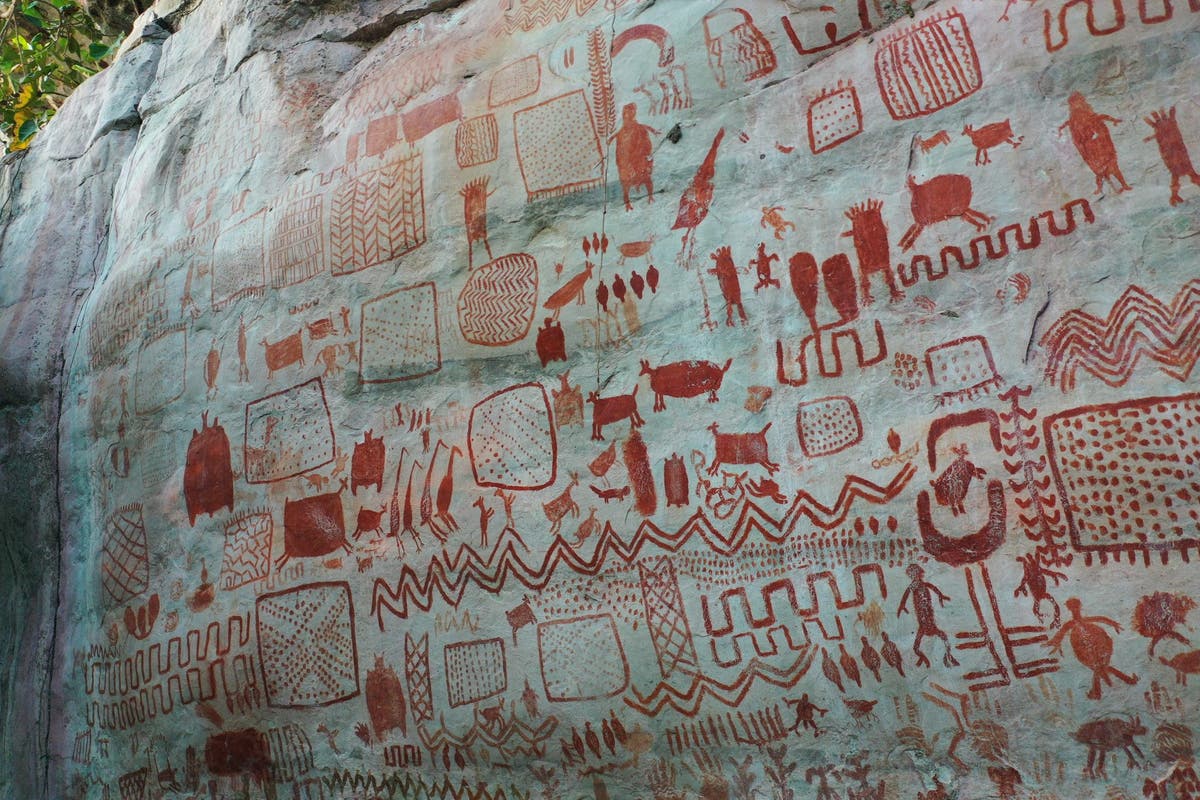Archaeologists have uncovered a huge rock in the Colombian Amazon containing extensive ochre animal paintings dating back 12,500 years, a discovery that sheds light on the mythology and diet of the continent’s first humans.
The Cerro Azul hill in Colombia’s Serranía de la Lindosa is home to an impressive collection of paintings depicting a wide variety of creatures, including animals and humans transforming into one another.
The free-standing table mountain contains 16 “tables” with ochre-colored drawings, some of which were only accessible to researchers after strenuous climbing.
These spectacular rock paintings, which probably served as a grand gallery for an ancient people for thousands of years, bear witness to the rich mythology that guided generations of indigenous Amazonians, according to the new study published in the Journal of Anthropological Archaeologyj.
“These rock art sites contain the oldest evidence of human existence in the western Amazon and are 12,500 years old,” said Mark Robinson of the University of Exeter, co-author of the study.

The researchers examined animal remains recovered from nearby sites and compared them with the creatures depicted in the rock art.
The scientists focused on six panels in particular in detail, ranging from a 40 x 10 meter panel with over 1,000 images to a much smaller 60 square meter panel with 244 well-preserved red paintings.
In total, the researchers documented more than 3,200 images painted on the rocks using drones and conventional photography. Most of them depict animals such as deer, birds, peccaries, lizards, turtles and tapirs.

They found that the diet of the indigenous inhabitants of the Amazon region was diverse and included not only fish but also a number of small and large mammals as well as reptiles such as turtles, snakes and crocodiles.
Although many fish have been found in archaeological finds, their appearance in art is limited to only two panels.
Since the proportions of the animal bones do not match the depiction of the animals in rock art, scientists suspect that the artists did not just paint what the animals ate.

Also striking is the absence of big cats in the paintings, even though they are the top predators in the region.
“The context illustrates the complexity of Amazonian relationships with animals, both as a source of food and as revered beings that had supernatural connections and required complex negotiations with ritual specialists,” said Dr. Robinson.
Some figures that combine human and animal characteristics suggest a complex mythology of transformation between animal and human states, a belief that is still present in modern Amazon communities today.

The paintings demonstrate the ancient peoples’ extensive knowledge of the region’s diverse habitats, including savannas, flooded forests and rivers.
“They knew the different habitats of the region very well and had the skills to track and hunt animals and harvest plants in each of these habitats as part of a comprehensive subsistence strategy,” said Javier Aceituno, another author of the study from Medellín, Colombia.
“Although we cannot be sure what meaning these images have, they certainly contribute to a more nuanced understanding of the power of myths in indigenous communities,” said Jose Iriarte, a co-author of the study from Exeter.





